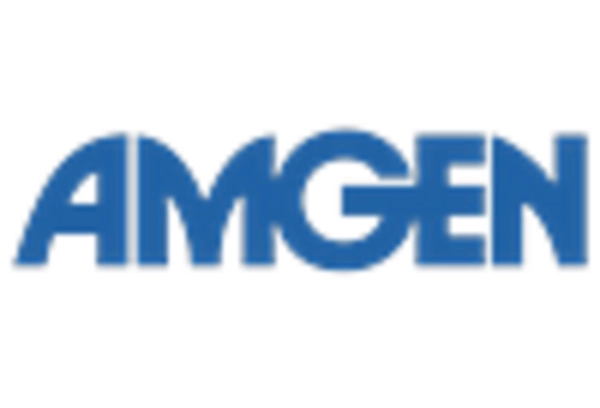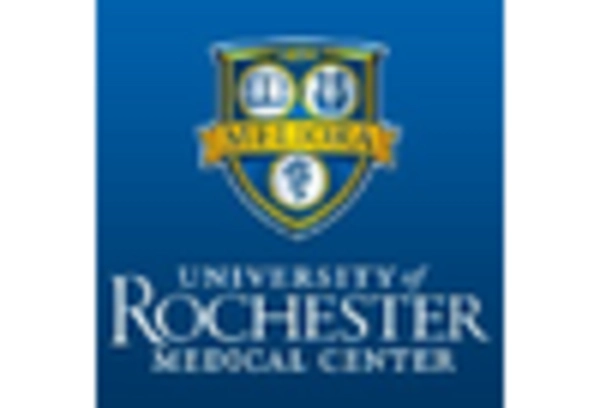The leukemia therapeutics market is characterized by a dynamic competitive landscape, driven by innovation, strategic partnerships, and a focus on personalized medicine. Key players such as Roche (CH), Novartis (CH), and Bristol-Myers Squibb (US) are at the forefront, each employing distinct strategies to enhance their market presence. Roche (CH) emphasizes its commitment to research and development, particularly in targeted therapies, while Novartis (CH) focuses on expanding its portfolio through strategic acquisitions and collaborations. Bristol-Myers Squibb (US) is leveraging its expertise in immunotherapy, positioning itself as a leader in novel treatment modalities. Collectively, these strategies contribute to a competitive environment that is increasingly centered on advanced therapeutic solutions and patient-centric approaches.
In terms of business tactics, companies are localizing manufacturing and optimizing supply chains to enhance efficiency and responsiveness to market demands. The market structure appears moderately fragmented, with several players vying for market share, yet dominated by a few key companies that significantly influence pricing and innovation trends. This competitive structure fosters an environment where collaboration and strategic alliances are essential for maintaining a competitive edge.
In October 2025, Roche (CH) announced a partnership with a leading biotechnology firm to develop a novel CAR-T cell therapy aimed at treating acute lymphoblastic leukemia. This collaboration is strategically significant as it not only enhances Roche's product pipeline but also underscores its commitment to advancing personalized medicine. The partnership is expected to accelerate the development timeline and improve patient outcomes, thereby reinforcing Roche's position in the market.
In September 2025, Novartis (CH) launched a new digital platform designed to streamline patient access to clinical trials for leukemia therapies. This initiative reflects Novartis's focus on digital transformation and patient engagement, potentially increasing enrollment in clinical studies and expediting the development of new treatments. By leveraging technology, Novartis aims to enhance its competitive positioning and address the growing demand for innovative therapies.
In August 2025, Bristol-Myers Squibb (US) expanded its manufacturing capabilities in the UK to support the production of its leading immunotherapy products. This strategic move is indicative of the company's commitment to ensuring supply chain reliability and meeting the increasing demand for its therapies. By enhancing local production, Bristol-Myers Squibb not only reduces logistical challenges but also strengthens its market presence in the region.
As of November 2025, current trends in the leukemia therapeutics market include a pronounced shift towards digitalization, sustainability, and the integration of artificial intelligence in drug development. Strategic alliances are increasingly shaping the competitive landscape, enabling companies to pool resources and expertise. Looking ahead, competitive differentiation is likely to evolve from traditional price-based competition to a focus on innovation, technological advancements, and supply chain reliability. This shift suggests that companies that prioritize research and development, alongside strategic partnerships, will be better positioned to thrive in the evolving market.

















Leave a Comment